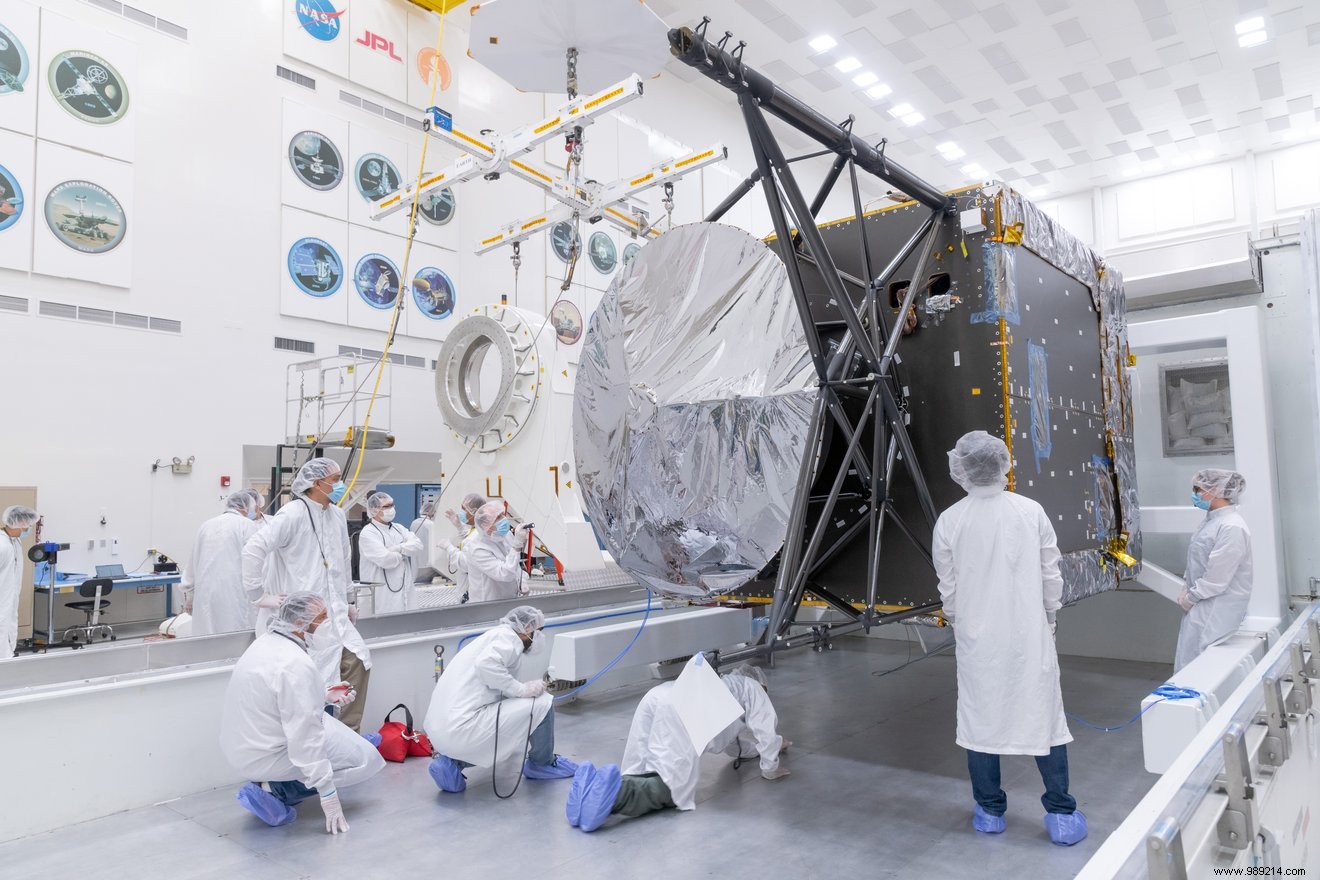Orbiting the Sun between Mars and Jupiter, the asteroid Psyche will soon receive visitors. To do this, NASA will rely on Hall effect thrusters. A first in deep space. The meeting is scheduled for 2026.
In the asteroid belt is an asteroid named 16-Psyche. With its 220 kilometers in diameter, the object is characterized by its composition:iron and nickel exclusively. If it incidentally represents a real gold mine (the value of its metals would amount to 10,000 quadrillion dollars), this body is of more interest to NASA for its history.
Psyché has two particularities. For one thing, it could be the corpse of an ancient Mars-like planet. On the other hand, NASA has so far never had the opportunity to study an object that is not composed of stone or ice.
If all goes as planned, this highly anticipated mission should leave Earth in August 2022, powered by a Falcon 9 rocket, to arrive on site in 2026, well helped by the gravitational force of Mars… But not only.
Once delivered to space, the spacecraft will indeed use an innovative means of propulsion known as Hall effect thrusters. This will be a first in deep space. Without this technology, the Psyché mission would probably never have seen the light of day.

Chemical powered engines are great for pulling rockets out of Earth's gravitational well. However, these engines are not the most fuel efficient machines. This is why our ships travel by other means once in space.
One of them is electric propulsion which relies on solar panels to capture energy from the Sun which in turn ionizes and accelerates a gas to produce a steady push. NASA has been experimenting with this approach for some time, most notably with its Deep Space 1 mission, launched in 1998, and then with its Dawn mission, in 2007, which visited Vesta and Ceres in the asteroid belt.
These spacecraft here used ion thrusters. With this approach, a gas (xenon) is injected into a chamber before being bombarded by electrons to be ionized. You then get a plasma. These ions are then ejected at very high speed by the electric field, allowing the thrust. To generate this electric field, these thrusters use two polarized grids.
Hall effect thrusters differ in the way they generate this electric field. Here, the technology relies on the combination of a magnetic field and an electrostatic potential difference between an anode and a cathode.
Many orbiting satellites these days rely on Hall effect thrusters to maintain course. What NASA is proposing today is to use this type of propulsion in deep space, which is a different environment. Indeed, the further away we are from the Sun, the less energy we generate from the solar panels. There's also the question of whether we can keep these thrusters pulsing for that long.

If NASA had attempted to develop its Psyche mission with chemical propulsion, it would have required about five times as much fuel. This mass would have made the probe even larger than Cassini, which orbited the Saturn system from 2004 to 2017.
FYI, this mission cost about four billion dollars, the kind of budget that NASA only reserves for "priority" missions. However, the Psyché mission is not one.
Thanks to these Hall effect thrusters, engineers were finally able to design a smaller, and therefore more affordable spacecraft (less than a billion dollars). This is why it can be launched without any problem.